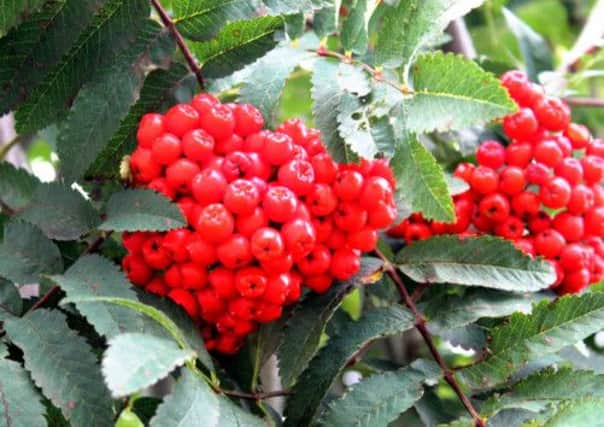Burning bright


Even when high winds and driving rain have stripped the leaves from the trees, those great big hanging bunches of berries identify the rowan for what it is.
This particular variety is Sorbus aucuparia, the most widely-planted of the family, which are an adaptable lot, well able to make the most of various soils and situations. They also self-seed like mad – if you decide to grow one, expect its babies to sprout up in the most unlikely places.
Advertisement
Hide AdAdvertisement
Hide AdMountain ashes, although not long-lived, are tolerant individuals and come in a variety of shapes and sizes. Some spread their canopies wide; others grow almost like columns, and many are recommended for smaller gardens. But ‘small’ can mean many things, and unless you’re prepared to prune regularly, that ‘small’ rowan could end up a bit on the large side.
In the end, it’s down to the individual, and the colour of those berries – orange berries, red berries, white berries, yellow berries or, if you’re really brave and are willing to search for and spend a bit more on something rather special, brown berries in the shape of S meliosmifolia, which hails from China.
If you want red, then S hybrida ‘Gibbsii’ should fit the bill. This is one tough tree, with lovely foliage as well as those long-lasting berries. However, be warned, it might be classified as small, but no-one seems to have told it – it demands more room than your average rowan.
And there’s Sorbus americana, which has clusters of small white flowers in May to June, and then red, showy fruits ripening in September. It’s also described as a small tree, but it can actually reach 40ft, so it’s definitely not one for your average garden.
Advertisement
Hide AdAdvertisement
Hide AdFor white berries, there’s none better than S cashmiriana. It comes, no surprise, from Kashmir.
For yellow, ‘Joseph Rock’ is king. Not only does it have beautiful berries, but in autumn its foliage can put on a show to rival a maple going out in a blaze of glorious colour. It’s named after an Austrian-turned-American plant collector who scoured China, collecting thousands of plants.
There are numerous other varieties, all of which are happiest on fertile, well-drained soil.